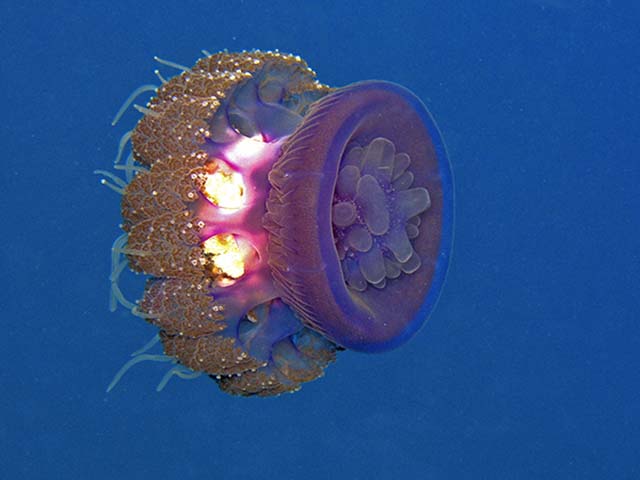| Cepheidae () |
| 14 cm WD (male/unsexed) |
|
pelagic; marine |
| Indo-Pacific: Red Sea to South Africa, north to Russia and east to Marquesas Islands. |
|
10 to 14 cm wide, a large dome at apex, the dome covered completely with about 30 large, pointed warts; 80 to 90 marginal lappets, in each octant 8 to 9 large oval velar lappets between 2 very small, pointed ocular lappets; upper halves of the 8, stout mouth arms nearly coalesced at base, lower halves forked and profusely branched; more than 100 long, tapering, pointed filaments 5 to 6 inter-rhopalar canals in each octant; distinguished by the very deep rhopalar clefts, the long tapering mouth-arm filaments and the brown color. |
| Edible species which is harvested in Southeast Asia. Bloom was reported in 2011 in seven reefs, and it accumulated in high densities on some beaches of Marsa Alam, Egypt, Red Sea. This is the first record of bloom in the said ecosystem; only second record of such phenomenon since the 1800s (Ref. 116839). Oceanic, occasionally drifting inshore (Ref. 3477). Found stranded along the beach near reef area (Ref. 116581). A bloom--tens of thousands of jellyfish--was recorded for the first time in Marsa Alam, Egypt in the summer of 2011. Assessments of photos estimated densities of up to 20 individuals per cubic meter in some reefs. Tangs and sergeant majors were observed feeding on this species during the bloom (Ref. 116839). |
|
Not Evaluated (N.E.) Ref. 123251)
|
|
|
Source and more info: www.sealifebase.org. For personal, classroom, and other internal use only. Not for publication.

